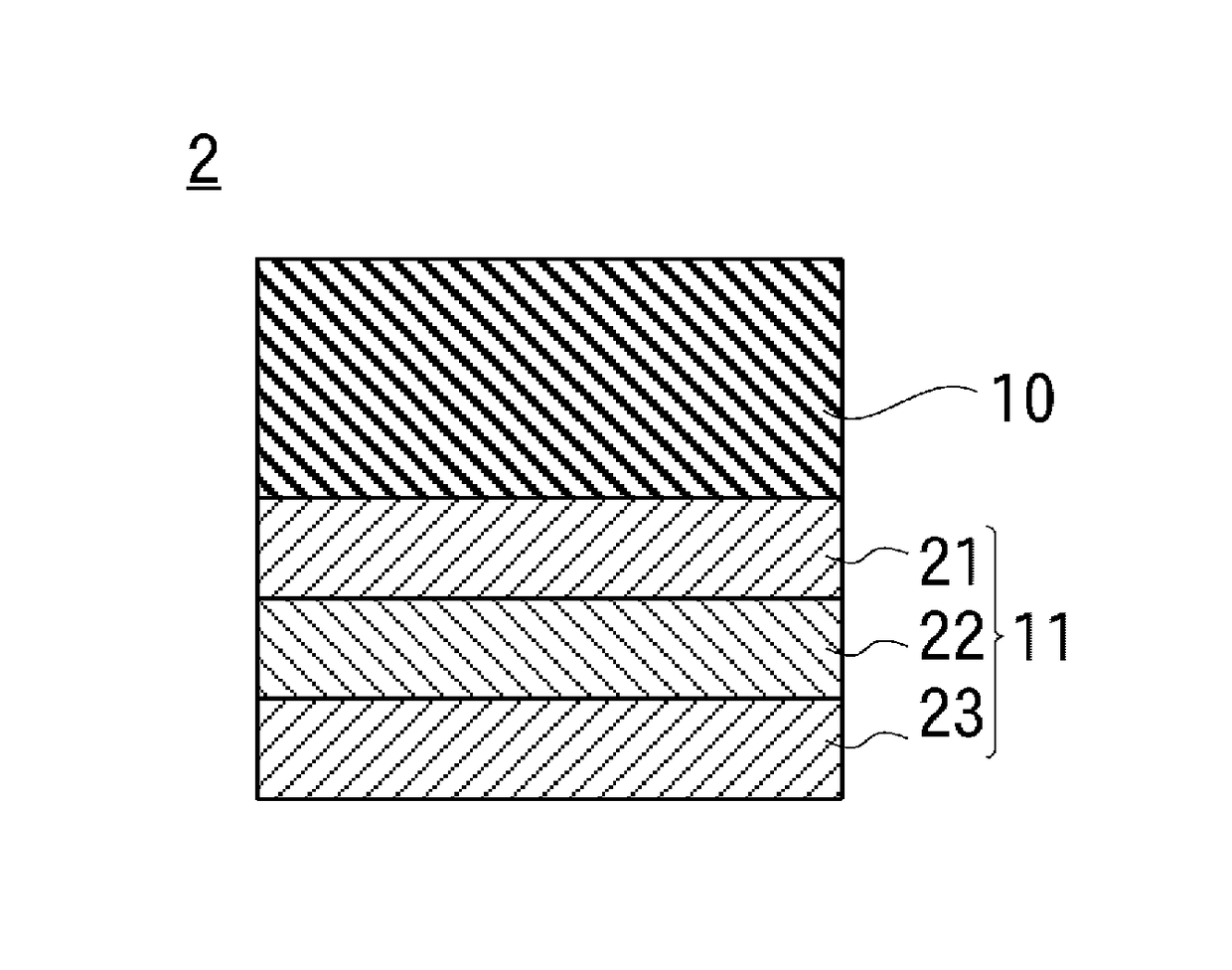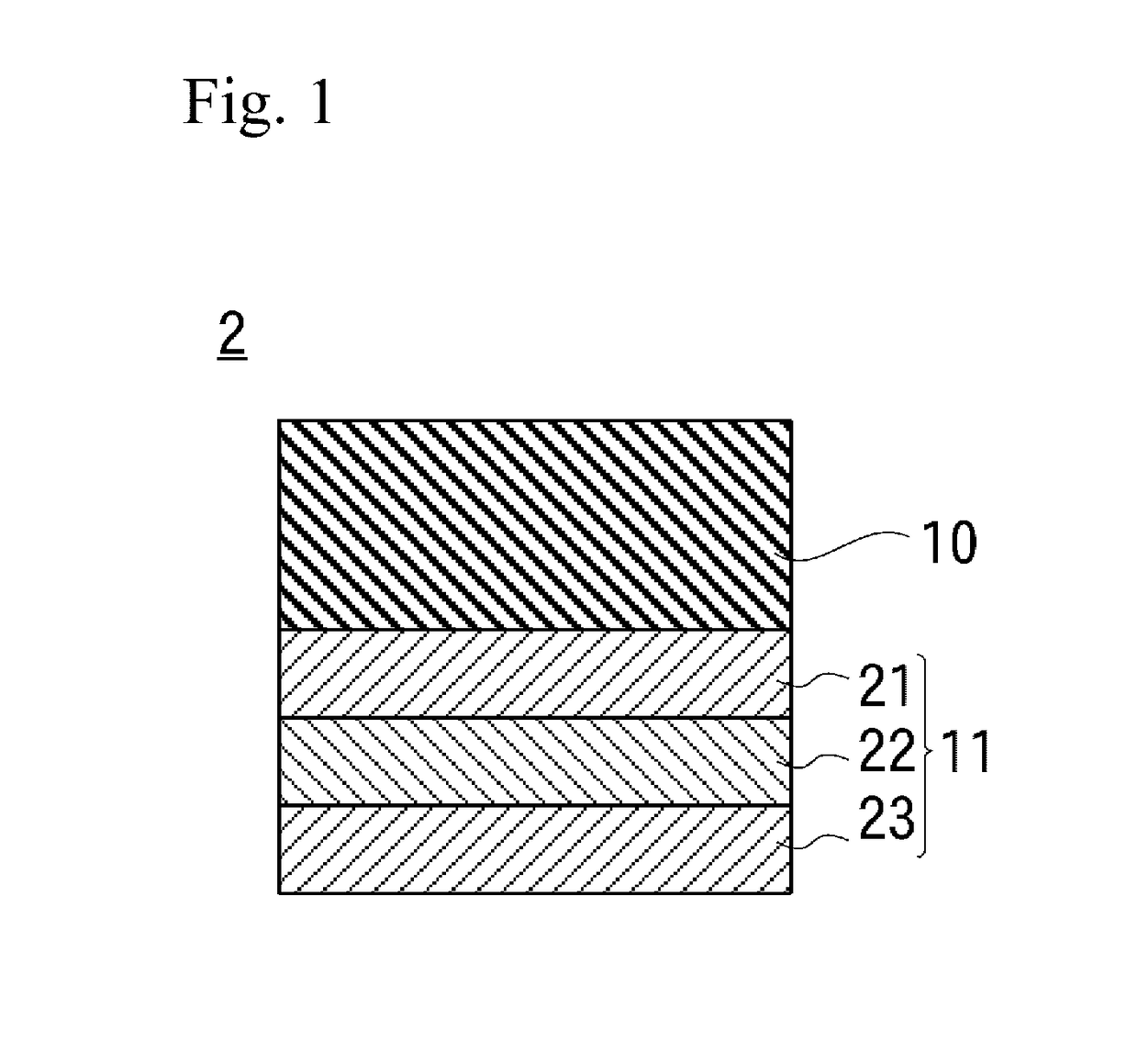Heat diffusion sheet
a technology of diffusion sheet and heat, which is applied in the direction of electrical equipment construction details, synthetic resin layered products, etc., can solve the problems of increasing the amount of heat generated by the cpu, and increasing the weight of the device, so as to achieve excellent thermal conductivity, low thermal conductivity of the composite adhesive film, and uniform temperature rise
- Summary
- Abstract
- Description
- Claims
- Application Information
AI Technical Summary
Benefits of technology
Problems solved by technology
Method used
Image
Examples
examples
[0056]The present disclosure will be explained below more specifically by referring to Examples.
[0057]Scale-like graphite obtained by immersing 100 weight parts of natural graphite in approximately 15 weight parts of mixture in which potassium permanganate was dissolved in concentrated sulfuric acid was heated to approximately 900° C., expanded graphite expanded to approximately 150 cm3 / g in a volume ratio was press-molded so as to obtain the expanded graphite having density of approximately 1.5 g / cm3. From the aforementioned expanded graphite, impurities were further removed so as to obtain the expanded graphite having density of approximately 1.7 g / cm3. This was further rolled so as to obtain film-shaped expanded graphite rolled sheets having thicknesses of 0.127 mm, 0.106 mm, 0.076 mm, 0.051 mm, and 0.040 mm. They were measured by a thermos-wave analyzer capable of measuring a thermal diffusion coefficient in a planar direction, and the thermal diffusion coefficients were 4×10−4 ...
examples 1 to 5
[0063]The graphite sheet 10 (this graphite sheet 10 contains both the expanded graphite rolled sheet and carbonized graphite sheet) manufactured by the aforementioned process and the composite adhesive film 11 were subjected to vacuum heating press so as to obtain the heat diffusion sheet 2 in which the acrylic adhesive layer 21 is in contact with and fixed to the graphite sheet 10.
[0064]This heat diffusion sheet 2 is a laminated body, and the heat diffusion sheet 2 (Examples 1 and 4) having 25 μm of a polyester film and the heat diffusion sheet 2 (Examples 2, 3, and 5) having 12 μm of the polyester film were fabricated.
PUM
| Property | Measurement | Unit |
|---|---|---|
| thickness | aaaaa | aaaaa |
| thickness | aaaaa | aaaaa |
| thickness | aaaaa | aaaaa |
Abstract
Description
Claims
Application Information
 Login to View More
Login to View More - R&D
- Intellectual Property
- Life Sciences
- Materials
- Tech Scout
- Unparalleled Data Quality
- Higher Quality Content
- 60% Fewer Hallucinations
Browse by: Latest US Patents, China's latest patents, Technical Efficacy Thesaurus, Application Domain, Technology Topic, Popular Technical Reports.
© 2025 PatSnap. All rights reserved.Legal|Privacy policy|Modern Slavery Act Transparency Statement|Sitemap|About US| Contact US: help@patsnap.com


